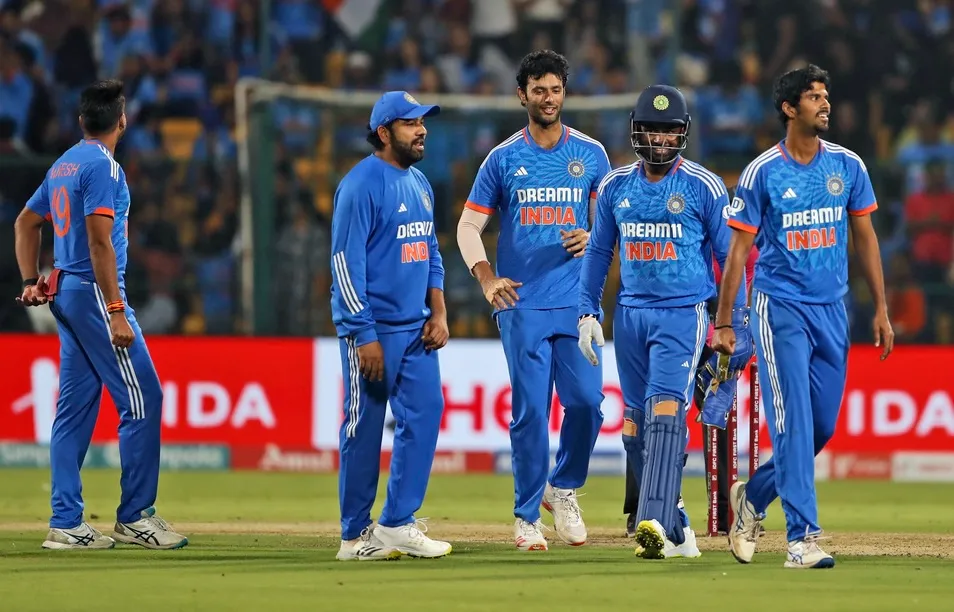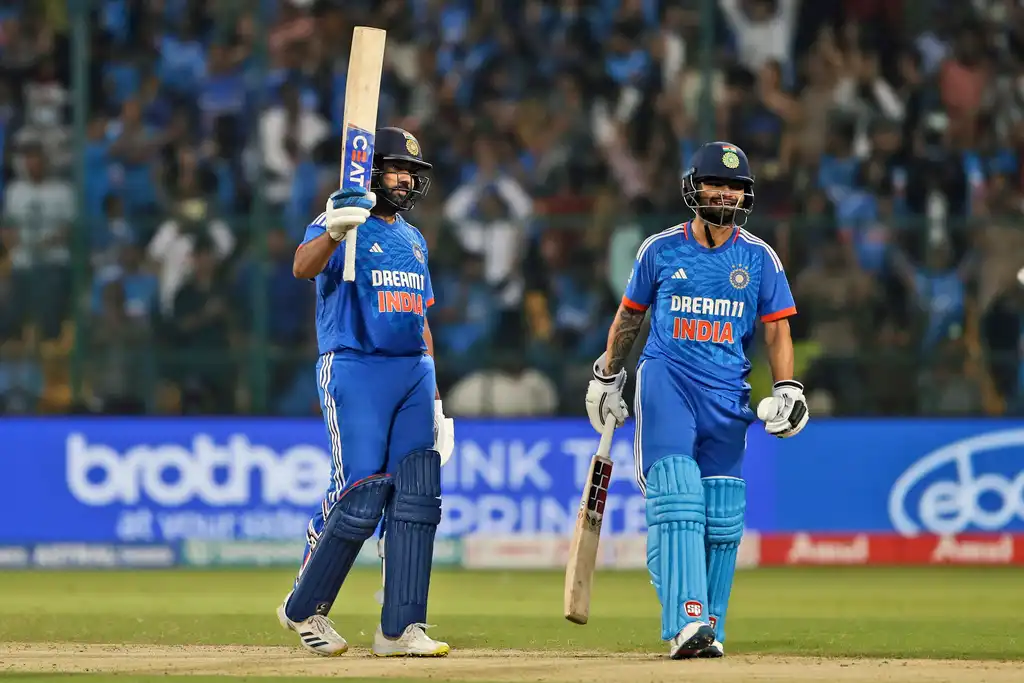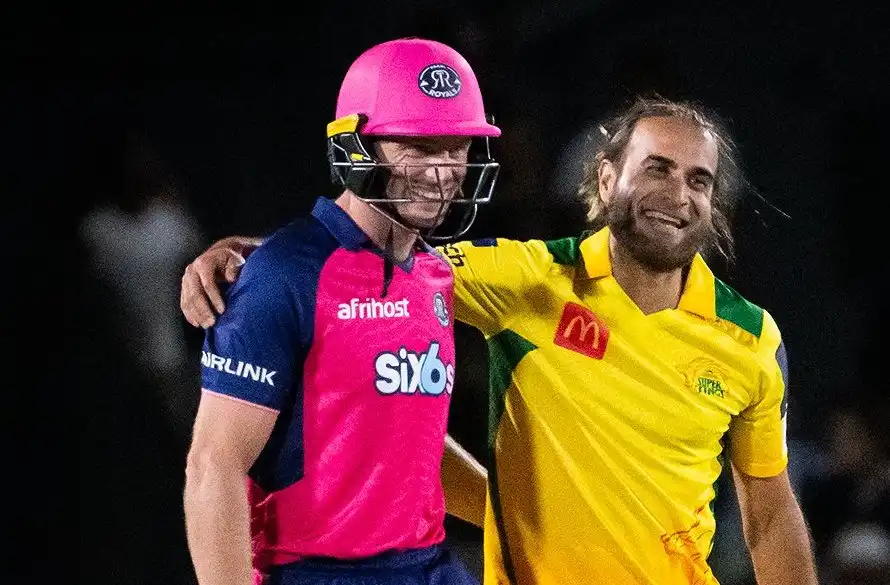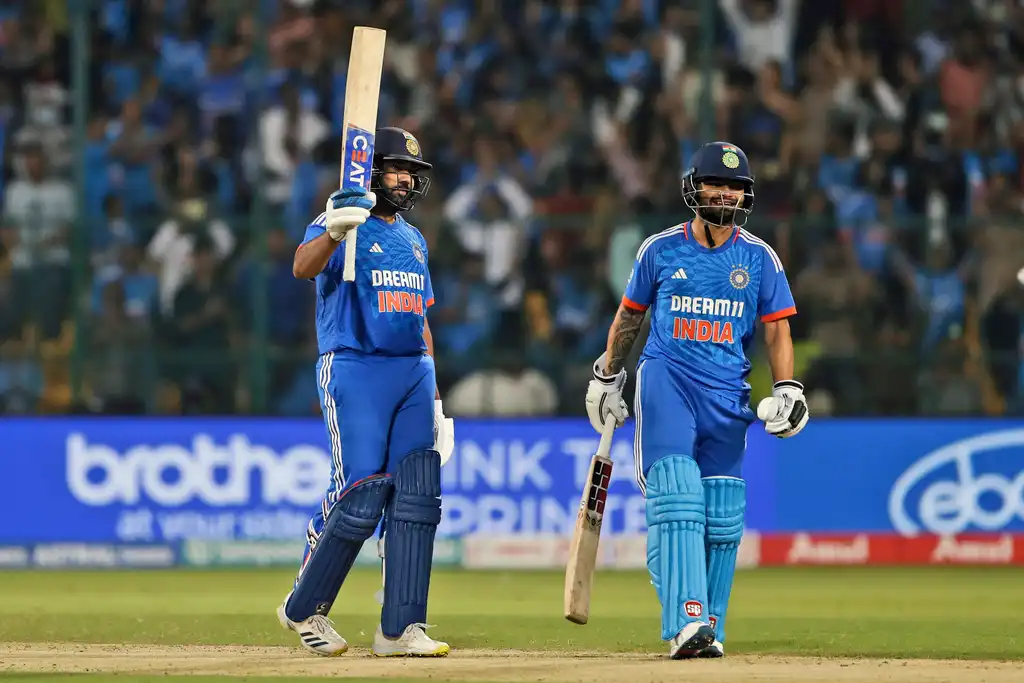 India won the 3rd T20I vs AFG in Super Over (AP Photo)
India won the 3rd T20I vs AFG in Super Over (AP Photo)
The 'Super Over' is quite a common term in the cricketing fraternity nowadays. This term has become popular and discussed with the evolution and growth of the T20 format. Meanwhile, recently, the Rohit Sharma-led side won the third T20I against Afghanistan in Super Over.
However, at the very inception of the T20 format, the Super Over was not a part of it. In those early days, a tied match was to be decided by a bowl-out, where both participating teams had a chance to hit the stumps five times. The team that did it successfully more times were declared the winner.
However, deciding on a winner like this was deemed inappropriate. Thus came the super-over.
For More Such Reads, Click Here
What is Super-over?
The two teams get to play one more over whenever a cricket match gets tied. The team that scores more in that over are declared the winner. Each team gets to select one bowler and three batters for these overs. If a team loses two wickets, that team is considered all out for the super over.
At first, the Super Over was only applied to T20 cricket. But over time, it came into play in ODI cricket. So, now 'Super Over' is part of white ball cricket. Now, we move on to the controversies regarding the rule and the evolved state of 'Super Over'.
World Cup 2019 Final
 Ben Stokes emerged as hero after WC 2019 Final (x.com)
Ben Stokes emerged as hero after WC 2019 Final (x.com)
New Zealand and England faced off in the final of the 50-over World Cup of 2019. New Zealand batted first and posted 241 runs for the loss of eight wickets in their fifty overs. Eventually, England had the exact total at the end of their 50 overs. So, the game moved on to Super Over.
As fate would have it, the winner of the match could not be decided even after the Super Over, both the teams had 15 runs at the end of it. Thus, the match was decided based on boundary counts, and England was declared the World Champions for the first time.
But this did not go down well with the cricket fraternity; hence, there was a change in the rules regarding the Super Overs made by the governing body of cricket.
Super Over in T20: Rules and Laws
- Until a game is decided, there will be a 'N' number of Super Overs.
- The team that bats second in the match will bat first in the first set of Super Over. If the game continues, the tables will turn again, which will continue as long as the match continues.
- If a bowler has already bowled in the Super Over, he will not be able to bowl again in the consequent set of super overs that are to come.
- If a batter is dismissed once in one of the Super Overs, he will not be able to bat again in the consequent sets.
India-Afghanistan Super Over and the absolute rule behind it?
The India vs Afghanistan 3rd T20I match went onto a second 'Super Over'. Rohit Sharma, who had 'Retired Out' during the first set of six balls, came out to bat again.
Now, the question is whether his batting the second time was legal or not. Well, at first, it was unclear whether Rohit Sharma was 'retired out' or 'retired hurt'. But he could not have come out to bat the second time if he had 'retired hurt'. So, it is apparent that he was 'retired out'. If that is the case, the umpires made a blunder, allowing him to bat the second time unless the Afghanistan team permitted that.
![[Watch] Sanju Samson's 'Rocket' Throw At Non Striker's Sends Karim Janat Packing](https://onecricketnews.akamaized.net/parth-editor/oc-dashboard/news-images-prod/1705512570482_Untitled design - 2024-01-17T225914.566.jpg)






